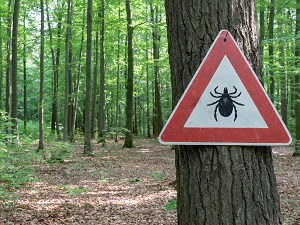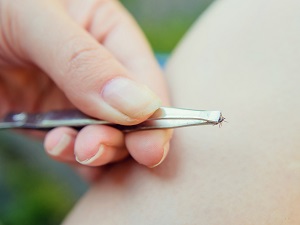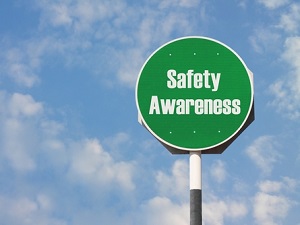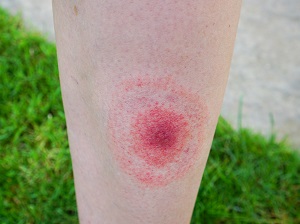One of the most common tick-borne diseases in the U.S., Lyme Disease is caused by a bacteria that is transmitted to humans through the bite of an infected blacklegged tick. Tick exposure can occur year-round, but ticks are most active during the warmer months of April through September.

While there have been confirmed cases of Lyme disease in nearly every state, most infections occur in the following areas:
- Eastern states, primarily New England and the mid-Atlantic
- Northern midwestern states, especially in Wisconsin, Minnesota, and the Great Lakes region
- West Coast, particularly northern California and less commonly, Oregon and Washington
Outdoor workers have an increased risk of contact with ticks especially if the job takes them into wooded areas, near high grass, or around leaf litter. Risk increases for those whose outdoor work involves construction, landscaping, forestry, brush clearing, land surveying, farming, railroads, oil fields, utility lines, or park and wildlife management.
In most cases, the tick must be attached for 36 to 48 hours or more before the bacteria that causes Lyme disease can be transmitted. Ticks can attach to any part of the body but are often found in hard-to-see areas like the groin, armpits, and scalp.
If you remove a tick quickly, within 24 hours, the chances of getting Lyme disease are greatly reduced. Most people are infected from the bites of immature ticks called nymphs. They are tiny (less than 2mm) and difficult to find on the body.

Protect yourself before going outdoors. Wear light-colored clothing so ticks are more visible. Wear long-sleeved shirts and tuck pants into socks or boots. This can delay the ticks from reaching the skin so they can be found more easily before attaching. Wear boots or closed-toed shoes and a hat for the same reason.
Blacklegged ticks are much smaller than common dog ticks. In their larval and nymphal stages, they are no bigger than a pinhead. Adult blacklegged ticks are larger, about the size of a sesame seed.
Use appropriate insect repellents on the body and on clothes. Avoid using insect repellents on the face. Clothing, boots, and gear can be treated with products containing 0.5% permethrin that acts as a tick-repellent. Always follow product instructions carefully when using an insect repellent.
Avoid contact with ticks as much as possible while outdoors. Avoid brushy, overgrown grassy, and woody areas, particularly in spring and early summer when young ticks feed. Walk in the center of trails.

After working in an area that may have ticks, it’s important to take precautions once indoors. Examine clothing, your body, and your gear for ticks. Ticks can ride indoors on clothing and supplies and attach to a person later. Don’t forget to check your hair, underarms, belly button, and groin.
Remove any attached ticks promptly and carefully with fine-tipped tweezers by gripping the tick as close to the skin as possible. Clean the skin well after tick removal. Avoid twisting or squeezing the tick. Do not handle the tick with bare hands. Do not use petroleum jelly, fingernail polish, or a hot match to remove a tick.
Shower after work, as soon as possible after being outdoors. Wash and dry work clothes at a high temperature to kill any ticks that were missed.
Secure the tick and take a picture. A picture of the tick can help the doctor identify what type it is and whether there is risk of a transmitted disease. Trap the tick in a piece of tape for disposal in the garbage. The doctor may want to see the photo if new symptoms develop.

A small bump or redness at the site of a tick bite that occurs immediately and resembles a mosquito bite, is common. This irritation generally goes away in 1-2 days and is not a sign of Lyme disease.
Lyme disease can present a variety of symptoms, depending on the stage of the infection, and the symptoms are not the same for everyone. Lyme disease symptoms can include:
- Flu-like symptoms including fever, chills, fatigue, muscle and joint aches
- Rash that may have a “bulls-eye” appearance (or may look different)
- Headache and neck stiffness
- Swollen lymph nodes
- Facial paralysis
- Arthritis with joint pain and swelling, particularly in large joints like knees
- Heart palpitations or irregular heartbeat
- Dizziness and shortness of breath
- Nerve pain
Anyone who begins to show symptoms of a suspected tick-borne infection should seek medical attention early. Most cases of Lyme disease can be treated successfully with a few weeks of antibiotics. If left untreated, Lyme disease can spread to the joints, the heart, and the nervous system and has the potential to become severe, chronic, and disabling.

.jpg)

.jpg)